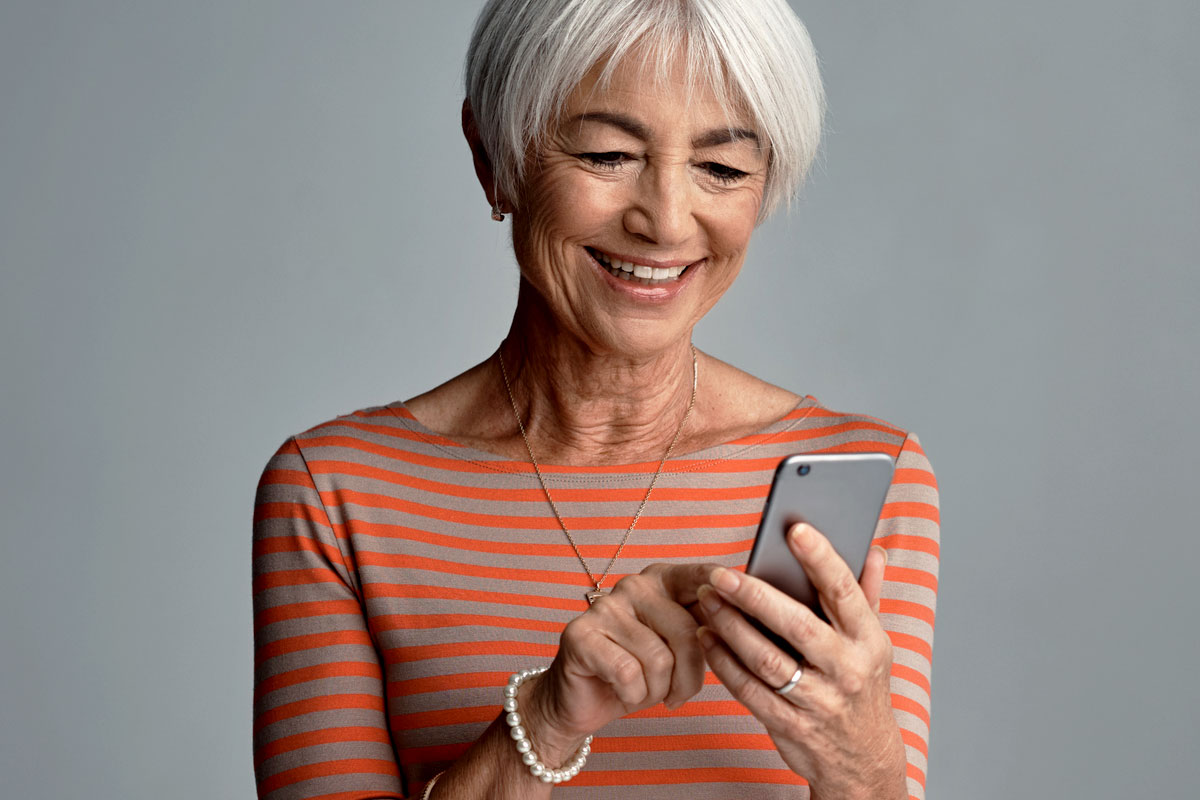What’s your impression of seniors and technology?
Do you think of people whose VCRs blink 12:00 constantly because they can’t figure out how to program it? Curmudgeons clinging to their landlines and travel agents? Confused social-media wannabes needing to be told, as the commercial says, “That’s not how it works! That’s not how any of this works!”
While it’s true that the digital age is unlikely to be embraced by some who grew up in the radio age, millions more not only accept technology, they embrace it. And that’s an important realization when considering the role health IT will play in treating a rapidly aging U.S. population.
Consider this fact: In 2000, only 14% of adults 65 or older were online. By 2016, that percentage had jumped to 64%. Older Americans like using digital technology for the same reasons that others do: to learn, to keep in touch with others, to simplify tasks.
So why do we continue to think seniors disdain and avoid technology? Partly, we may be failing to recognize the divisions between the elderly – say, those who are 75 and up vs. the 65-75 group. The key term to remember: Baby Boomers.
Boomers have different attitudes about aging than their parents did. They want to live active, participatory lives, even as they get older. That mindset, coupled with more familiarity with technology in general, suggest that the stereotype of grandparents with VCRs stuck on 12:00 are as outdated as tape-based TV recorders.
Boomers, born between 1946 and 1964, were among the early adopters of devices that now are commonplace but once were groundbreaking. Think of the personal computer. The first mass-produced Apple was released in 1977, the first IBM PC in 1981. So the oldest of Boomers would only have been in their ‘30s when computers became household items. Cellphones became widely used by roughly 1995 when the oldest Boomers were only 41.
Whatever the reason, there are clear distinctions in how much technology is used by different segments of older Americans. About 47% of those 75-79 use the Internet, compared to 68% of those in their early 70s. (Pew Research Center)
That shift is happening already and will only become more prevalent. The Boomers are a big group – roughly 75 million Americans – and 3 million of them will hit retirement age each year. By the time the last of the Boomers joins the ranks, the total U.S. population ages 65 and up will reach 71 million, up from 41 million in 2011, the federal Census Bureau says.
To be sure, the use of digital technology among the elderly is likely to continue to show disparities between wealth and educational levels. Use will be much higher for those with more disposable income and years of education.
But indicators are that significant numbers of older Americans already are willing to use wearables and other technology to keep track of their health and fitness. An Accenture survey[1] shows that 17% of Americans 65 and over are using the devices, only slightly behind the 20% of Americans under 65 using them. And those that aren’t doing so already are willing to start using them: 48% of those 65+ vs. 47% under 65.
To clarify, the point is not that anyone born after 1946 has dramatically different attitudes about technology than someone born, say, in 1945 or 1944. But they likely have different attitudes than someone born in the 1920s or 1930s.
And more importantly, Boomers represent the wave of a dramatic shift in who constitutes the elderly – not just their attitudes, but their sheer numbers. The somewhat inelegant but meaningful image for their movement through census tracking: “the pig in the python.”[2]
In future pieces, we’ll look at scenarios in which wearables can provide critical information about a senior’s health, scenarios about how individuals could benefit from such data and the larger ways in which the healthcare system can refine treatment through big-data analysis and predictions.
About Orb Health
Care Management as a Service™ rapidly provides EMR-connected remote contact centers as a scalable virtual extension of the practice to deliver cross-practice scheduling and care management programs as a guided service without adding staff, apps, or infrastructure.
